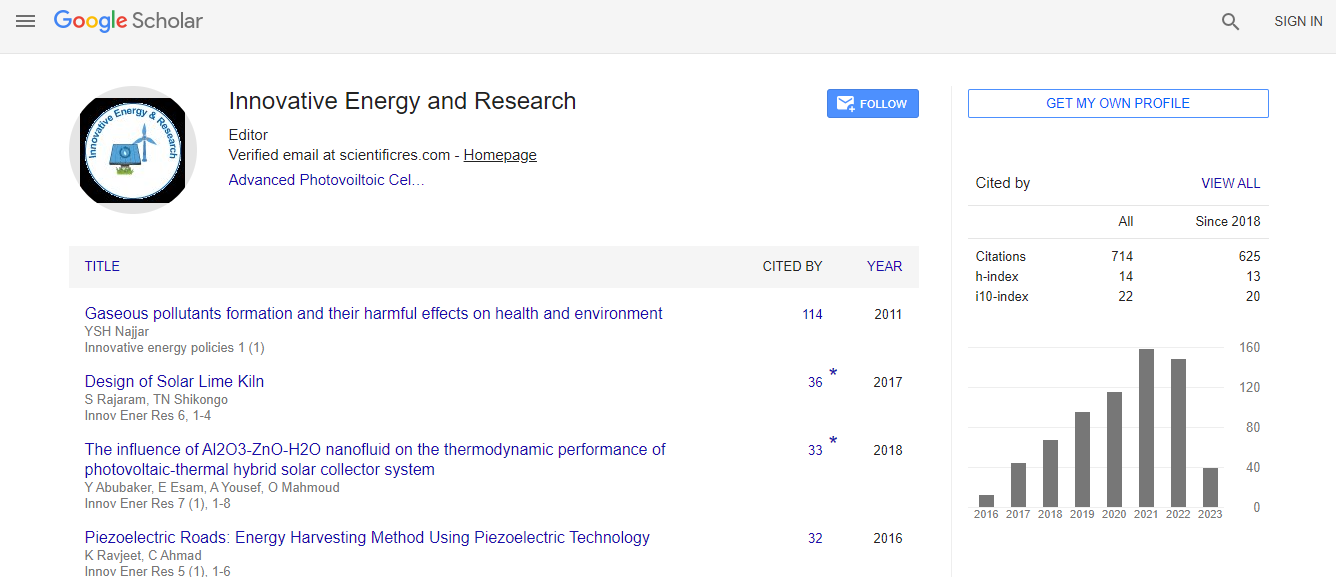Our Group organises 3000+ Global Conferenceseries Events every year across USA, Europe & Asia with support from 1000 more scientific Societies and Publishes 700+ Open Access Journals which contains over 50000 eminent personalities, reputed scientists as editorial board members.
Open Access Journals gaining more Readers and Citations
700 Journals and 15,000,000 Readers Each Journal is getting 25,000+ Readers
Google Scholar citation report
Citations : 712
Innovative Energy & Research received 712 citations as per Google Scholar report
Innovative Energy & Research peer review process verified at publons
Indexed In
- Google Scholar
- Open J Gate
- Genamics JournalSeek
- RefSeek
- Hamdard University
- EBSCO A-Z
- Publons
- Euro Pub
- ICMJE
Useful Links
Recommended Journals
Related Subjects
Share This Page
Hurricane wave energy harvesting
21st International Conference on Advanced Energy Materials and Research
Mahpara Habib and Katherine Hornbostel
University of Pittsburgh, USA
Posters & Accepted Abstracts: Innov Ener Res
Abstract
Global warming has triggered changes in the climate that have led to hurricanes becoming stronger and more frequent in recent years. In the past few decades, the frequency of category 4 and 5 hurricanes has increased and this trend is predicted to continue into the future. Hydrokinetic conversion devices (HCDs), which harness energy from water flow, are an already established technology, with several prototypes deployed around the world. However, these devices have a rated working velocity of only 1.5-3.0 m/s, whereas in a category 5 hurricane, wave speeds of up to 28 m/s are possible, which would render HCDs useless and even may sweep them on shore. Therefore, a novel approach to hydrokinetic conversion that offers both a sturdy design and has rated velocities to match hurricane wave speeds is required. However, energy harvesting from hurricane waves is still relatively a nascent technology and needs to be developed further in order to be implemented commercially. This project’s objective is to explore the available technology options for harvesting energy from hurricane waves. If a suitable device can be designed, the enormous energy of storm waves crashing on to hurricane infested coastlines can be converted to electricity to be supplied to regions suffering from power outage as an aftermath of the hurricane. We have proposed two designs for achieving such ends. The first device uses a moving plate and bellows system attached with a hydro-power loop situated behind a seawall, which could be scaled up to become a stationary power generation system. The second design involves a composite seawall embedded with piezoelectric plates to produce electrical energy from the impact force of hurricane waves.Biography
Mahpara Habib is a student under Dr Katherine Hornbostel’s supervision at the Mechanical Engineering and Materials Science Department at the University of Pittsburgh. She is dedicated to developing materials that can harness energy from natural disasters and convert it into useful energy. At the present time, her work is focused on piezoelectric materials that can be utilized to capture energy from hurricane waves.
E-mail: habib.mahpara@gmail.com

 Spanish
Spanish  Chinese
Chinese  Russian
Russian  German
German  French
French  Japanese
Japanese  Portuguese
Portuguese  Hindi
Hindi 
